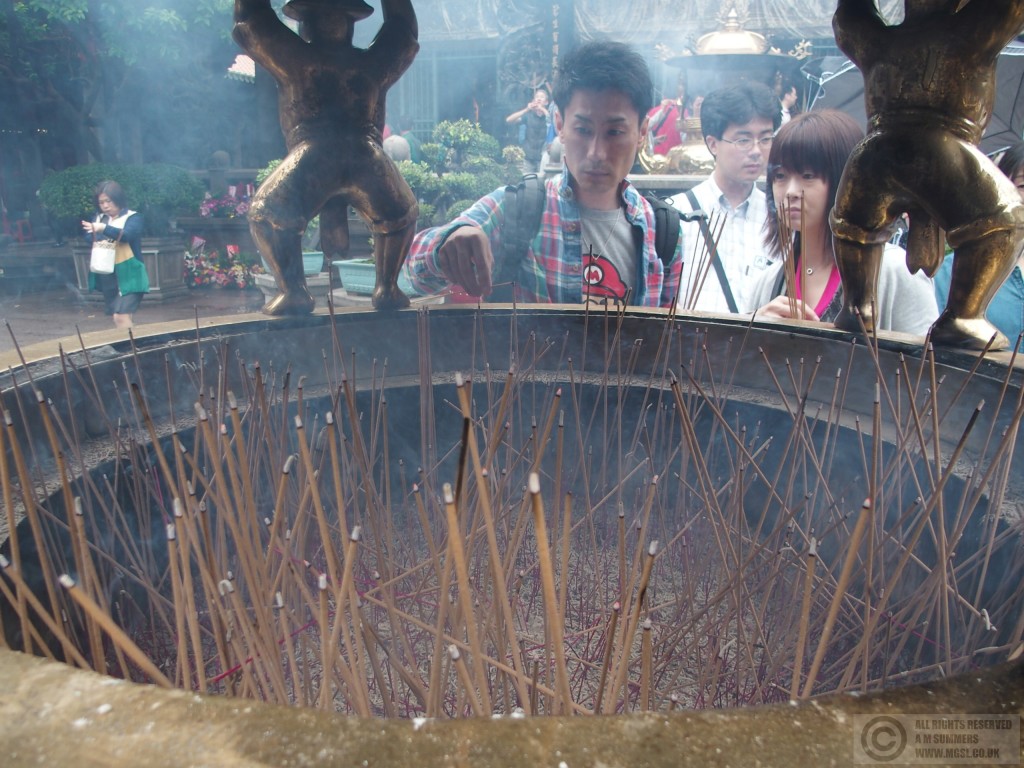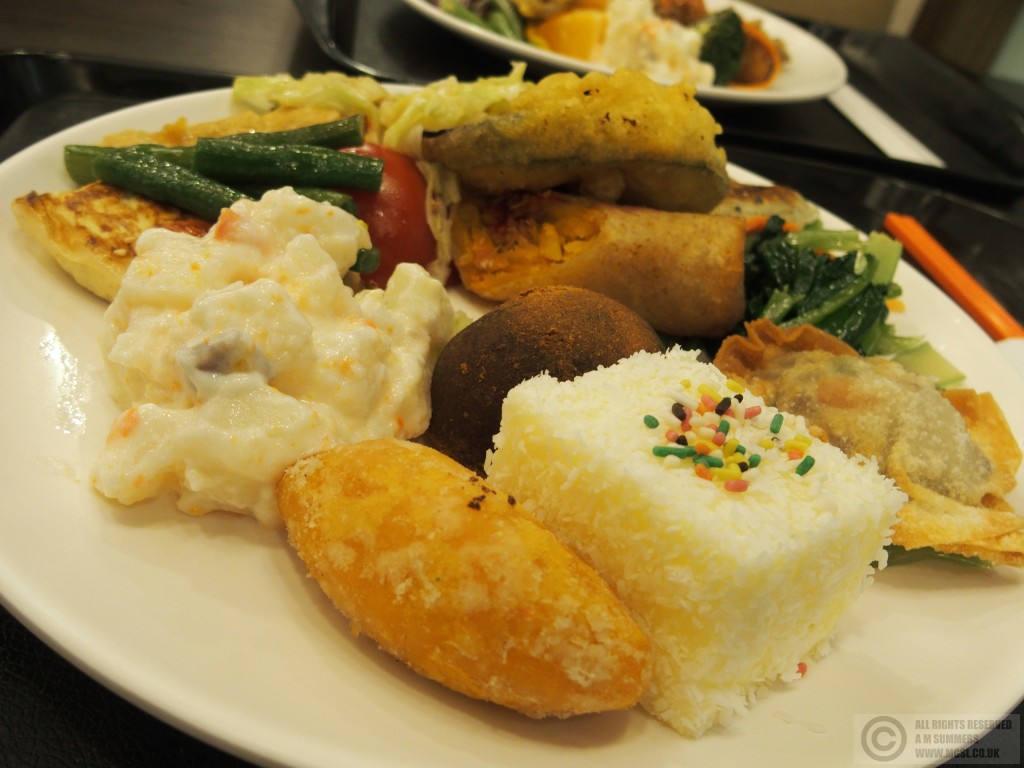The metro journey to Beitou was overground most of the way, so we got to see Taipei’s suburbs – a wasteland of shabby concrete apartment complexes. A very slow branch line service complete the journey to Xinbeitou (New Beitou), Taipei’s hot spring resort town.
The walk up the valley bottom was pleasant enough, through a narrow municipal park that straddled a stream, until it was time to cut up to the road where a path led off to a large turquoise pool that emitted a sulphurous steam. Yellow sulphur rimed the boulders along the shore.
From here, water is piped to some of the spas lining the road back into town, and to the public baths (some other spas are fed from springs further up the valley). The pool also feeds the stream along which we had walked, depositing a green mineral on its rocky bed. The architecture of the spa hotels was bland and sometimes shoddy – the only buildings of interest were the Hot Springs Museum, a former bathhouse dating from 1913 (although the contents were pretty dull) and a wooden building right by in the valley bottom, with floor to ceiling windows overlooking the stream, which turned out to be the public library. Overall the place was more Matlock Bath than Cheltenham Spa I’d say, but it made a pleasant excursion for a sunny day.
After more than a week of Asian food we craved a change. As luck would have it, there was a bright, busy Italian place next door to the hotel. A sort of Chinese Pizza Express, crowded with students. The anchovy, olive and mushroom pizza was pretty good, although it did arrive covered with salami which hadn’t been mentioned in the menu and which Mr V had to pick off.
By next morning the sunshine had been replaced by heavy rain, and it was 13:30 before it cleared up enough to venture out and take the metro to the Longshan temple, Taipei’s most famous. It was very crowded, with people of all ages praying, lighting incense, making offerings of flowers and food, and throwing jiaobei, crescent shaped wedges of wood whose resting position somehow indicated your fortune. Evidently some people weren’t prepared to accept the first verdict, and kept on throwing until they got the answer they wanted.
Exiting via a side gate we made our way to Hoaxi market which is supposed to specialise in snake dishes, but we saw none. We had hoped to see the river beyond the market, but our view was blocked by flood walls and an elevated highway. This was a working class district with shops and workshops selling sinks, motorbike spares, and metal strips, and cheap food joints selling intestines: it was a world away from the much smarter Zhongshan.
Eventually we found our way to Ximen metro station and returned to Zhongshan to check out the dining options of the department store. Korean was the cuisine for dinner today, seafood noodle soup with a trio of vegetable side dishes. And only one slice of bonus pork for Mr V to fish out.
It was pouring with rain again the next morning, so it was another late start. This time we took the metro to the railway station and walked to the Taiwan National Museum in a park. Despite the name this was not Taipei’s premier museum – that’s the National Palace Museum on the northern edge of the city, which holds the treasures rescued/looted (depending on which side of the Taiwan Strait you live) from the Chinese Imperial collection. All 650,000 of them. For many people it’s the main reason for visiting Taiwan, but it gets hopelessly overcrowded when the weather is bad, and we felt no great need to see it. The National Museum is much more humble but it does relate more to Taiwan, with interesting exhibits on the aboriginal Taiwanese population and a collection of black jade in the basement. Then a stroll back to station to find a vegetarian Chinese restaurant that I’d read about.
We avoid all-you-can-eat buffets because we would never eat enough to make them good value, but this was a pay-by-weight place. The selection was staggering – there must have been a hundred different dishes and, with the exception of one unpleasant tofu dish (was this the infamous stinky tofu?), it was all delicious, and only £1.50 for a heaped plate. In order to work some of it off we decided to walk back to Zhongshan metro station along an underground passage that was billed as a shopping mall. But it was probably the dullest mall in Taiwan – I wondered if the tunnel’s real main purpose was to serve as a typhoon shelter. Otherwise it seemed pointless. Although I suppose it keeps the rain off.








